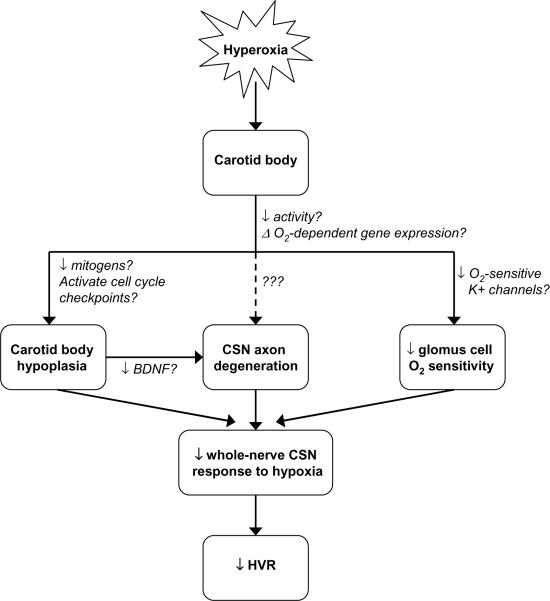Fig. 4.
Developmental hyperoxia impairs the hypoxic ventilatory response (HVR) through its effects the carotid body, including carotid body hypoplasia, carotid sinus nerve (CSN) axon degeneration, and diminished glomus cell O2 sensitivity; changes to carotid body size and innervation persist into adulthood, while chemoreceptor O2 sensitivity may recover after return to normoxia. Current evidence suggests that CSN axon degeneration is secondary to carotid body hypoplasia (and associated loss of trophic support), but more direct effects of hyperoxia on chemoafferent neurons cannot be excluded (dotted line). Hypothesized pathways by which hyperoxia influences carotid body development are also described (text adjacent to arrows); although some pathways have been supported experimentally (e.g., changes in BDNF expression), question marks indicate that causality has not been established yet for any of these pathways.

